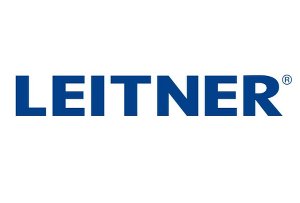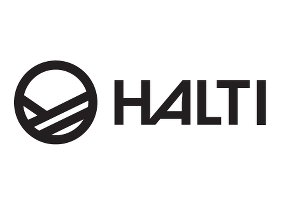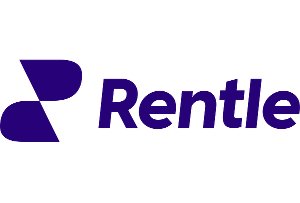Destimetrics - Bookings And Occupancy Move Up As Daily Rates Ease at Western Mountain Destinations

Confronted with continued economic turmoil, vacillating consumer confidence and sentiment, and some notable declines in bookings and demand during June, western mountain destination properties participating in DestiMetrics* monthly data round-up changed direction during July and lowered daily rates more notably than any month since September 2023. According to their monthly Market Briefing released by parent company Inntopia, the more consumer-friendly rates gave a solid boost to bookings for the remaining summer season and into the fall and early winter months. Although year-over-year rates remained ahead of last summer, they were appreciably softer than advertised several weeks and months ago.
“At the midway point of the summer season, we are seeing a fundamental change in. how properties are managing their summer pricing strategies as economic uncertainty continues to challenge consumers and destination travel suppliers,” explained Tom Foley, director of Business Intelligence for Inntopia and author of the monthly Market Briefing. “Lodging properties reacted swiftly when facing the softened demand for July and August by easing back their daily rates—and the result was a strong reversal from last month’s weakening demand.”
July occupancy improved but closed down slightly
In a year-over-year comparison to last July, actual occupancy for the month was down 0.8 percent while the Average Daily Rate (ADR) was up 1.8 percent and that slightly higher rate offset the decline in occupancy to deliver an aggregated 0.9 percent increase in revenues. The 0.8 percent decline in occupancy was a substantial improvement from the 4.2 percent deficit for July that was posted as of June 30.
Full Summer from May through October
Summer occupancy as of July 31 is up one percent compared to last year with June, August and October all posting monthly gains between 2.5 and 7.4 percent while May, July, and September are all down slightly with declines ranging between 0.8 percent in July to two percent in September. Compared to last year at this time, daily rates are up 2.1 percent for the full summer with upticks in all six months–from a scant 0.9 percent increase in June to a healthy 5.9 percent gain for the month of September.
Booking pace for arrivals in July through December also benefitted from the more relaxed rates—up 13.2 percent for those six months compared to the same time last year with all six posting notable occupancy increases except October—which was down a slight 0.1 percent. “Based on what we saw in the data this month, those more relaxed rates for the upcoming months played a leading role in driving up both occupancy and demand, with the full summer occupancy flipping from being down 0.5 percent last month to being up one percent this month. And, this is the first time that occupancy for the aggregated summer months have been above zero since before the season began back in April,” observed Foley.
Economic indicators
The Dow Jones Industrial Average (DJIA) managed to edge up 0.1 percent over the previous month, but it marks the third consecutive month of growth. As of July 31, the DJIA is 8.1 percent higher than one year ago. While strong corporate earnings and a few trade deals helped buoy investors, concerns about unresolved trade agreements with major international partners along with inflation worries and weak jobs data kept the Index essentially flat during July.
Both the Consumer Confidence Index (CCI) released by the Conference Board and the Consumer Sentiment Index (CSI) from the University of Michigan rose modestly with the CCI fluctuating up and down from month-to-month while the CSI is on a cautious upward trend. The CCI added a slight 2.1 percent while the CSI inched up a single point to reach its highest level since last February. However, both remain down sharply from their 12-month averages as concerns about current conditions dipped.
“An interesting finding this month was that consumers indicated intentions to reduce dining out and domestic travel but they are looking to increase international travel, which has no real economic merit as the dollar is losing strength—so that is a bit of a head-scratcher,” offered Foley.
News about the unemployment rate and job creation generated consternation as only 73,000 new jobs were added during July while the job creation figures for both May and June were adjusted dramatically downward. May plunged from 144,000 to only 19,000 new positions while June’s adjusted numbers plummeted from 147,000 to 14,000 for a total of 258,00 fewer jobs in those two months. At the same time, the Unemployment Rate edged up 4.2 percent.
In the highly anticipated inflation report, inflation held steady at 2.7 percent—up from 2.3 percent in April. However, core inflation which does not include energy or food categories, was up a considerably higher 3.1 percent compared to last year and up 0.3 percent from last month. Wage growth improved during the month, up 3.9 percent and remained ahead of the national inflation rate of 2.7 percent and even the core inflation rate of 3.1 percent.
Keeping an eye on Room Nights Available (RNA) which posted more than 47,000 fewer available nights for booking over the summer back in June, improved during July with that figure shrinking to a loss of just 31,818 fewer nights—or one percent fewer nights available this summer compared to last.
Softening daily rates had a significant impact on booking demand during July as the four percent increase in rates posted as of June 30, dropped to a modest 2.1 percent gain and that easing of rates led to a 16 percent increase in demand. “Rates softened for each arrival month from July through October during the month and we saw a strong correlation to increases in occupancy over that same time period,” Foley confirmed.
Revenue held steady, due primarily to lodging properties pinpointing the right balance between softer rates and higher demand—allowing absolute revenue to maintain a two percent year-over-year increase—where it was as of June 30. “Making a major shift in rate while holding revenue steady is a good balance of art and science, and properties got it just right this past month,” continued Foley.
International arrivals remain down significantly but for the first time in several months, the deficit from Canadians shrunk slightly—going from down 58.3 percent last month in a year-over-year comparison to down 57.8 percent at the end of July—the first sign of stability in several months. Bookings from Mexico were up 6.7 percent compared to flat last month while bookings from Western Europe continue their downward trend—dropping an additional 4.4 percent to reach a 43.6 percent decline compared to last summer. The Southern Hemisphere countries of Australia and New Zealand are also posting deepening declines—losing an additional 4.6 percent in July and are now down 29 percent.
Different pricing terciles are having different consumer reactions. Evidence of how effective rate softening was, the Economy tercile dropped their daily rates by 4.5 percent during July and recorded a strong 5.5 percent improvement in their occupancy. In contrast, the Moderate and Luxury terciles both lowered their rates but posted only modest increases in occupancy. Although July was good for the Economy tercile, the Moderate and Luxury categories are outperforming the Economy tercile. “The gravitation toward economy properties during July is a clear reflection of the price sensitivity that is driving business lately,” noted Foley. But overall, this pattern of Moderate and Luxury dominance for the season is well-established. When consumers are feeling an economic pinch, more affluent consumers are better insulated from economic uncertainty and turbulence. It sounds contradictory, but we expect to see the higher-priced properties continue to attract customers, even as the economy-priced properties become more of a magnet,” he clarified.
“For the first time in almost two years, properties softened their year-over-year summer rates by an aggregated 1.9 percent and travelers responded in a big way as occupancy and demand pace both climbed sharply,” continued Foley. “By finding that delicate balance between demand and rate, lodging properties were able to hold revenue steady while filling more rooms which is obviously good for them but also good for the entire community from restaurants and retail outlets to special events and attractions with more overnight visitors in town playing, dining, and shopping. And consumers get a more inflation-friendly mountain experience,” he added.
Foley went on to summarize the month by pointing out that based on the rapid response to softening rates during July, “careful rate management like we saw last month will be the key to a successful second half of the summer season and likely the upcoming winter.”













